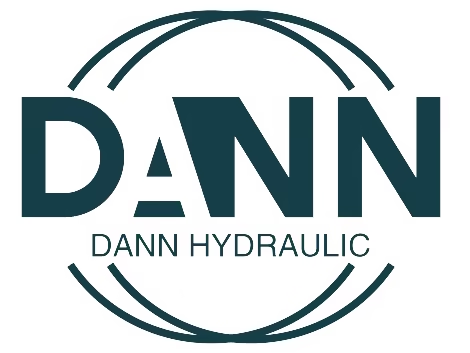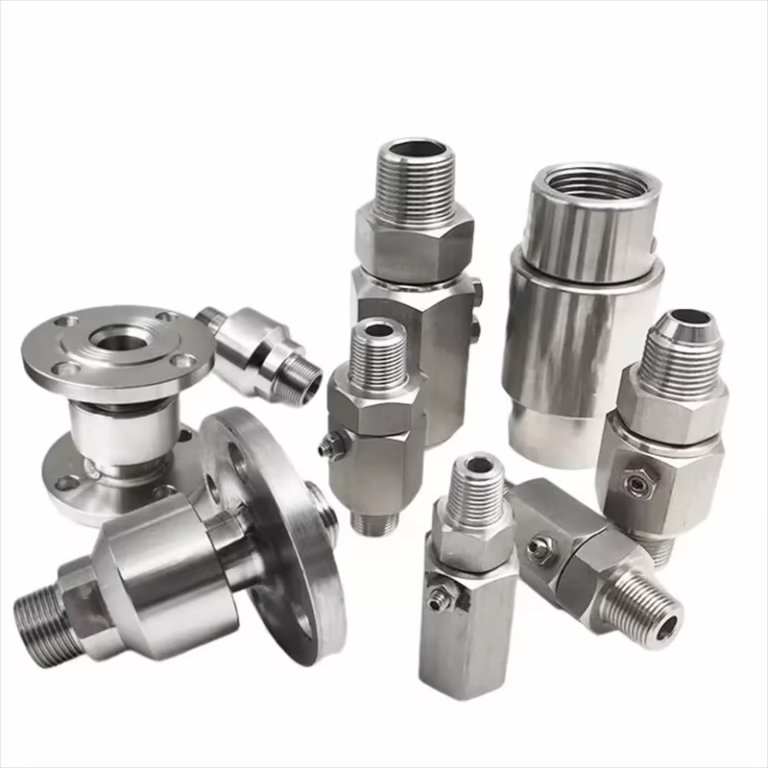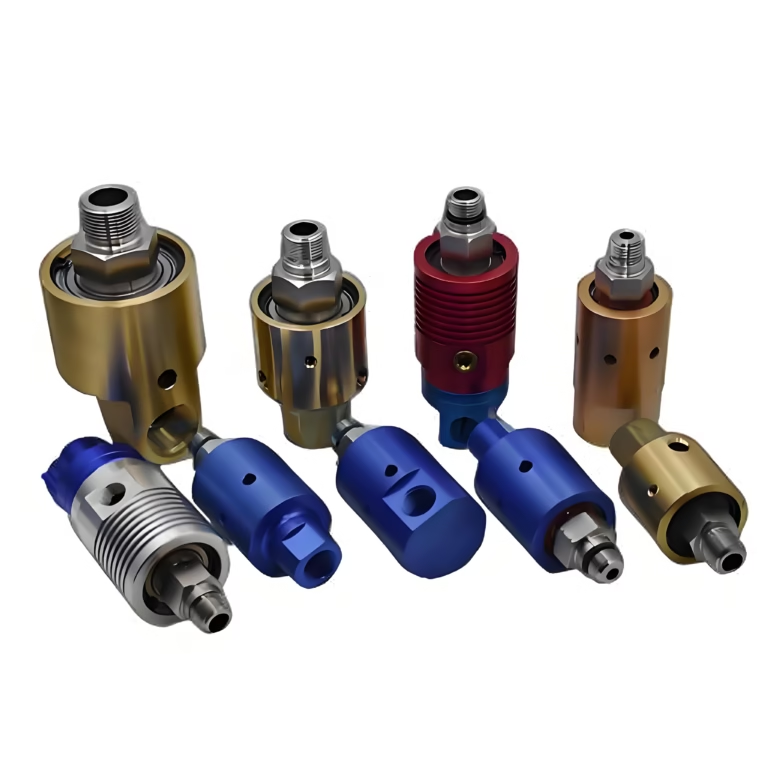What Are the Best Rotary Unions for Wind Turbines? A Comprehensive Guide
In the realm of renewable energy, wind turbines stand tall as a beacon of sustainability and innovation. These towering structures harness the power of the wind to generate clean electricity, playing a crucial role in mitigating climate change. At the heart of a wind turbine’s operation lies a critical component: the rotary union. This unsung hero facilitates the transfer of essential fluids and electrical signals between the stationary nacelle and the rotating rotor, ensuring smooth and efficient power generation. Choosing the right rotary union is paramount, as it directly impacts the turbine’s performance, reliability, and longevity. In this comprehensive guide, we will delve into the world of rotary unions for wind turbines, exploring their types, design considerations, maintenance tips, and market trends.
Understanding Rotary Unions in Wind Turbines
Before we dive into the specifics, let’s first understand what a rotary union is and why it’s so crucial in wind turbines. A rotary union, also known as a rotating union or a swivel joint, is a device that allows the transfer of fluids (such as hydraulic oil, coolant, or lubricants) or electrical signals between a stationary part and a rotating part. In wind turbines, this rotating part is typically the rotor, which spins to capture wind energy and convert it into mechanical power. The stationary part, on the other hand, is the nacelle, which houses the generator, gearbox, and other critical components.
The primary function of a rotary union in a wind turbine is to provide a reliable and efficient connection between the nacelle and the rotor. This connection is essential for several reasons:
Hydraulic Power Transmission:
Many wind turbines utilize hydraulic systems to control the pitch of the blades and the yaw of the nacelle. These hydraulic systems require a continuous supply of hydraulic fluid, which is transferred from the nacelle to the rotor via hydraulic rotary unions.
Cooling Systems:
Wind turbines generate a significant amount of heat during operation, particularly in the gearbox and generator. To prevent overheating, cooling systems are employed, and these systems often rely on rotary unions to transfer coolant between the stationary and rotating parts.
Electrical Signal Transmission:
In some advanced wind turbines, electrical slip rings are used to transmit electrical signals between the nacelle and the rotor. These slip rings are a type of rotary union that enables the transfer of electrical power or control signals without the need for physical wires that would otherwise be tangled or damaged by the rotating rotor.
Given their critical role, rotary unions must be designed to withstand the harsh operating conditions of wind turbines. They must be able to handle high pressures, high temperatures, and extreme rotational speeds, all while maintaining a perfect seal to prevent leaks.
Types of Rotary Unions for Wind Turbines
There are several types of rotary unions available, each designed to meet specific application requirements. When it comes to wind turbines, the most common types are:
Hydraulic Rotary Unions:
Single-Passage Rotary Unions:
These are the simplest type of hydraulic rotary unions, featuring a single fluid passage. Engineers use them in applications transferring one hydraulic fluid, such as blade pitch control systems in wind turbines.
Multi-Passage Rotary Unions:
As the name suggests, these rotary unions have multiple fluid passages, allowing the transfer of multiple hydraulic fluids or a combination of hydraulic fluid and electrical signals. They are commonly used in more complex hydraulic systems or in applications where both hydraulic power and electrical control are required.
Electrical Slip Rings:
Mercury Slip Rings:
These are a traditional type of slip ring that uses mercury as the conductive medium. Mercury slip rings were once common but are declining due to environmental concerns and better alternative technologies.
Brush Slip Rings:
Brush slip rings utilize carbon brushes to maintain contact between the stationary and rotating parts. Users value them for their simplicity and reliability, but they may need to replace worn brushes periodically for proper maintenance.
Fiber Optic Rotary Joints (FORJs):
FORJs are a more modern and advanced type of slip ring that uses optical fibers to transmit signals. They offer several advantages over traditional slip rings, including higher bandwidth, immunity to electromagnetic interference, and longer lifespan.
Hybrid Rotary Unions:
Hybrid rotary unions combine both hydraulic and electrical capabilities in a single unit. They are designed to transfer both hydraulic fluid and electrical signals simultaneously, making them ideal for complex wind turbine systems that require both types of connections.
Design Considerations for Wind Turbine Rotary Unions
When you select a rotary union for a wind turbine, you must take several design considerations into account. These factors will vary depending on the specific application and operating conditions of the turbine. Some key design considerations include:
Operating Pressure and Temperature:
The rotary union must be able to handle the maximum operating pressure and temperature of the hydraulic fluid or coolant being transferred. This information can typically be found in the turbine’s specifications or hydraulic system design documents.
Rotational Speed:
The rotary union must be designed to operate at the maximum rotational speed of the turbine’s rotor. This will determine the type of bearings and seals used in the rotary union, as well as the overall design of the unit.
Fluid Type and Viscosity:
The type of hydraulic fluid or coolant being transferred affects the material selection and seal design of the rotary union. For example, some fluids may be more corrosive or have higher viscosity, requiring specialized materials or seal designs to ensure proper functioning.
Environmental Conditions:
Wind turbines are often located in harsh environments, exposed to extreme weather conditions, saltwater corrosion, and other environmental factors. Design the rotary union to withstand these conditions, using appropriate materials and coatings to prevent corrosion and ensure long-term reliability.
Maintenance and Serviceability:
Design the rotary union for easy maintenance and serviceability. This may include features such as modular design, easy access to seals and bearings, and the ability to replace components without dismantling the entire unit.
Best Practices for Selecting Rotary Unions
With so many options available, selecting the best rotary union for a wind turbine can be a daunting task. To simplify the process, consider the following best practices:
Consult with Experts:
The first step in selecting a rotary union is to consult with experts in the field. This may include rotary union manufacturers, wind turbine OEMs, or experienced maintenance technicians. They can provide valuable insights into the specific requirements of your application and recommend the most suitable rotary union based on your needs.
Evaluate Performance Specifications:
Carefully evaluate the performance specifications of each rotary union under consideration. Pay close attention to factors such as operating pressure, temperature, rotational speed, and fluid compatibility. Ensure that the rotary union meets or exceeds the requirements of your application.
Consider Total Cost of Ownership:
While the initial purchase price of a rotary union is important, it’s also crucial to consider the total cost of ownership over the life of the unit. This includes factors such as maintenance costs, downtime, and replacement costs. In some cases, investing in a more expensive rotary union with higher upfront costs reduces long-term expenses by lowering maintenance needs and extending lifespan.
Look for Innovation and Advanced Features:
The wind energy industry is constantly evolving, with new technologies and innovations emerging all the time. When selecting a rotary union, look for units that incorporate the latest innovations and advanced features. This may include hybrid rotary unions, fiber optic rotary joints, or other cutting-edge technologies that can improve performance, reliability, and efficiency.
Request Samples and Testing:
Before making a final decision, consider requesting samples of the rotary unions under consideration and conducting testing in a controlled environment. This can help you evaluate the performance, reliability, and durability of each unit and make an informed decision based on real-world data.
Maintenance and Troubleshooting Tips
Once you’ve selected and installed the best rotary union for your wind turbine, proper maintenance is essential to ensure its continued performance and reliability. Here are some maintenance and troubleshooting tips to keep in mind:
Regular Inspections:
Schedule regular inspections of the rotary union to check for signs of wear, leaks, or other potential issues. The frequency of inspections will depend on the operating conditions of the turbine and the manufacturer’s recommendations.
Lubrication:
Lubricate the rotary union properly according to the manufacturer’s specifications. This will help reduce wear and tear on the bearings and seals and extend the lifespan of the unit.
Cleaning:
Keep the rotary union clean and free of debris. This will help prevent contamination of the hydraulic fluid or coolant and ensure the proper functioning of the unit.
Replacement of Worn Components: If any components of the rotary union show signs of wear or damage, replace them immediately. This will help prevent further damage and ensure the continued reliability of the unit.
Troubleshooting:
If you encounter any issues with the rotary union, consult the manufacturer’s troubleshooting guide or contact their technical support team for assistance. They can provide valuable insights into the problem and recommend the appropriate solution.
Market Trends and Innovations
The wind energy industry is constantly evolving, with new technologies and innovations emerging all the time. When it comes to rotary unions, some of the latest trends and innovations include:
Hybrid Rotary Unions:
As mentioned earlier, hybrid rotary unions combine both hydraulic and electrical capabilities in a single unit. The increasing complexity of wind turbine systems and the demand for more integrated, efficient solutions drive this trend.
Fiber Optic Rotary Joints:
Fiber optic rotary joints are becoming more popular due to their advantages over traditional slip rings. They offer higher bandwidth, immunity to electromagnetic interference, and longer lifespan, making them ideal for advanced wind turbine systems that require high-speed data transmission.
Advanced Seal Technologies:
Manufacturers are constantly developing new and improved seal technologies to enhance the performance and reliability of rotary unions. These innovations include advanced materials, coatings, and seal designs that can withstand harsh operating conditions and provide longer-lasting performance.
Condition Monitoring and Predictive Maintenance:
The wind energy industry increasingly focuses on reliability and efficiency by adopting condition monitoring and predictive maintenance trends. This involves using sensors and data analysis to monitor the performance of the rotary union in real-time and predict potential failures before they occur. This can help reduce downtime, maintenance costs, and improve the overall performance of the wind turbine.
Conclusion
Selecting the best Rotary Unions for Wind Turbines is a critical decision that can impact the performance, reliability, and longevity of the entire system. By understanding the different types of rotary unions available, considering key design factors, and following best practices for selection and maintenance, you can ensure that your wind turbine operates at peak efficiency and provides years of reliable service. As the wind energy industry continues to evolve, staying up-to-date on the latest trends and innovations in rotary union technology will be essential to maintaining a competitive edge and driving the transition to a more sustainable energy future.







